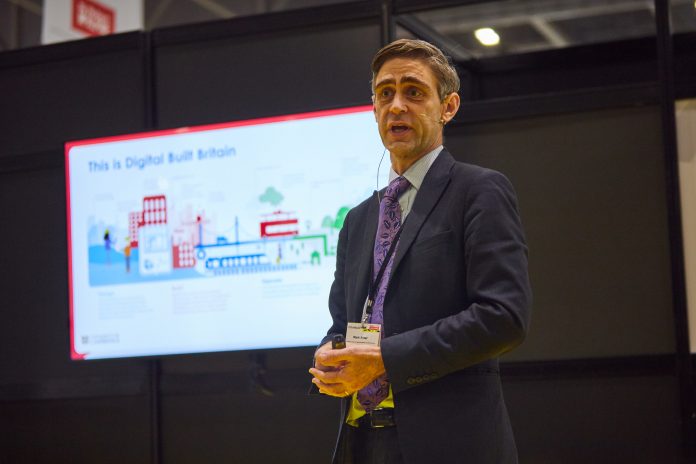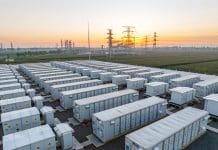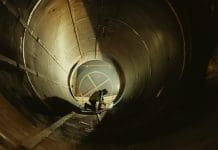Mark Enzer, head of the National Digital Twin Programme at the Centre for Digital Built Britain and contributor to built environment event Futurebuild, explains how connecting digital twins can serve smarter cities
By 2023, Gartner predicts that 30% of smart city projects will be discontinued for three main reasons: an inability for technology to cope with growing demand, residents’ worries about how data is used and the value of smart cities being less than expected.
However, reports of their demise have been greatly exaggerated – the key to smart city success is using data for the public good.
In 2017, Sidewalk Labs, a sister company of Google, announced plans to build a smart city in a disused waterfront area of Toronto. The company hoped that this bold urban experiment could become a model for other cities around the world. However, an independent panel criticised the plan because it contained too much “tech for tech’s sake”. The panel suggested that instead of applying complex solutions to situations that may not require it, the company should put the citizens at the centre of the design process.
What is a smart city?
According to the Department for Business, Energy & Industrial Strategy, there is no absolute definition of a smart city. It is rather “a process, or series of steps, by which cities become more ‘liveable’ and resilient and, hence, able to respond quicker to new challenges”.
But a view that seems to be growing in popularity is that “smart” is where digital and physical worlds meet for the benefit of people and society, and this can apply to cities too. It’s not technology-led – but it is technology-enabled.
This view is people-focused and recognises that better decisions based on better insights from better data lead to better outcomes for people and the planet. Decisions influence every area of a city – how we use it, how we plan to change it and how we operate and maintain the space.
A system of systems
Everything in a city, such as transport networks, energy, water, telecommunications and more, are connected and rely on one another to operate successfully – it’s a “system of systems”. However, for simplicity, we tend to take a reductionist approach.
We see the built environment as a series of construction projects and then we break each project down into its component parts so that we can manage the outputs. But we often fail to look the other way and see how all the parts fit together in the system, which is the actual route to the outcomes we desire.
A smart city can give a holistic view of our city ecosystem, understanding how each part connects so we can use these connections more effectively. For example, many sectors are exploring how they can improve sustainability, and we are all working towards a goal to achieve net zero carbon targets by 2050. But net-zero cannot be solved in silos. Could taking a holistic approach help us to find a more effective and long-term solution?
Connecting digital and physical
Creating digital twins of assets, processes and systems in our built environment allows us to visualise and manage them more effectively. Then, because the physical systems are interconnected, we can also imagine connecting the digital twins, as a way to understand and manage complex systems.
Connecting digital twins is really all about secure, resilient data sharing across organisational and sector boundaries. To make these connections successful and to minimise the friction in data sharing, we need some high-level shared rules to ensure the quality and consistency of data. That’s the route to interoperability.
The next step
To successfully deliver a smart city, served by connected digital twins, we must pull together across industry, academia and government. The National Digital Twin programme is a key step in the digital transformation of infrastructure and construction. The programme, run by the Centre for Digital Built Britain (CDBB), is developing an information management framework that creates those shared rules for how we can share data.
CDBB will create the framework but not the national digital twin itself. That will be done by industry movers and shakers creating their own digital twins and connecting them together.
Are we ready?
To fully embrace smart cities, we still have barriers to overcome, particularly in terms of culture and behaviour. This makes the journey to smart cities a little more difficult but better in the long term because companies will need to show that the technology and data they use is genuinely for public good.
The built environment industry is progressive and most are open to digital twins. However, built environment professionals should not just wait for technology and opportunity to be handed to them but become active participants in how we get value from data and use digital twins to help make better decisions.
Though Gartner predicts that many smart city projects fail to move beyond the pilot stage, it does not mean that smart cities are impossible to create. By taking a people-focused, systems-based approach, and using high quality data to make better decisions, we will improve our ability to deliver positive outcomes for people and society. It’s not about what technology you can introduce; it is about what value you can get out of your data and how you use it to transform a system and benefit society.
Want to find out more about the role of the digital world in the built environment? Explore the Futurebuild Digital Impact spotlight here.
Mark Enzer
Head of the National Digital Twin Programme
Centre for Digital Built Britain
Twitter: CambridgeCDBB
LinkedIn: Centre for Digital Built Britain














